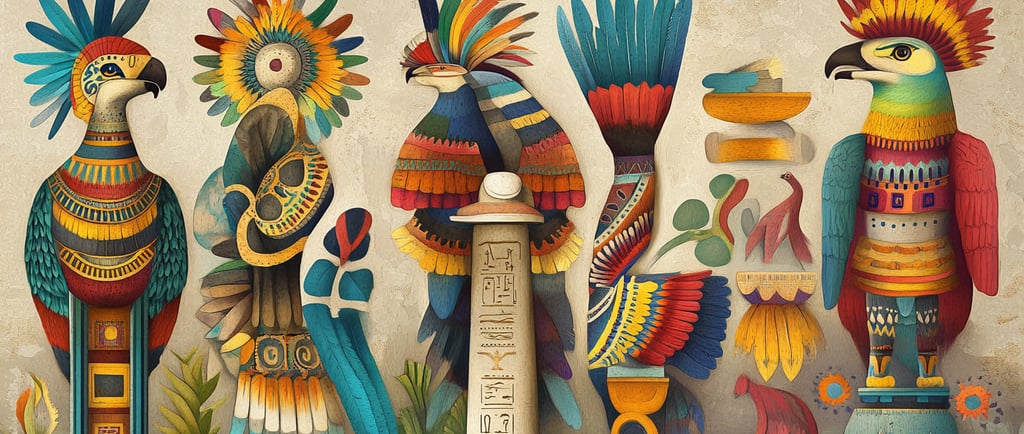Rise of Open-Source AI: Mistral and Deepseek Leading Way


In the gleaming offices of tech companies across the globe, a quiet revolution is taking place. The guardians of artificial intelligence's most sophisticated models are beginning to unlock their doors, and the results are upending conventional wisdom about how innovation happens in one of technology's most competitive sectors.
Arthur Mensch, the cerebral chief executive of Mistral, a French AI startup, recently offered rare praise for a company that might otherwise be considered a competitor. "We think that this is a great moment for open-source models," Mr. Mensch said, highlighting the achievements of Deepseek, a Chinese AI firm that he described as "the Mistral of China."
The relationship between these two companies offers a window into how open-source development is challenging the established order in artificial intelligence, creating ripples that have reached even OpenAI, the industry's most prominent player.
Breaking the Closed-Source Paradigm
For years, the most powerful AI models remained locked behind closed systems. Companies like OpenAI and Google invested billions to build increasingly sophisticated systems, creating what many viewed as an insurmountable moat around their technology.
Mistral and Deepseek have challenged this premise by sharing their model parameters, allowing developers worldwide to build upon their work. This approach, known as "open-weight" development, enables a form of collaborative innovation that Mr. Mensch believes is fundamentally more efficient.
"We've always been believers in open-source prevailing because of the flywheel, because of everybody building on top of each other," said Mr. Mensch. "It just makes things more efficient."
This efficiency was dramatically demonstrated when Deepseek released its R1 model, which matched the performance of models like OpenAI's ChatGPT but required a fraction of the resources to develop. The achievement has forced a reckoning within the industry, with even Sam Altman, OpenAI's chief executive, acknowledging the need to reconsider his company's closed-source strategy.
The Economics of AI Development
In an industry where some firms have raised tens of billions of dollars, Mistral stands apart for its fiscal restraint. Though backed by prominent venture capital firms like Andreessen Horowitz and Lightspeed, the company operates with a deliberate frugality.
"It doesn't take €100 billion to make enterprises embrace technology and innovate within their frameworks," Mr. Mensch noted pointedly, in what many interpreted as a reference to Microsoft's massive investment in OpenAI.
This financial discipline has allowed Mistral to focus its resources on strategic initiatives, including expanding into agentic AI—software that can autonomously perform tasks—and building its own data centers to reduce dependence on larger technology platforms.
The company has also revamped its Le Chat application to democratize access to these capabilities. "Le Chat is a place where you can build your agents," Mr. Mensch explained. "You should see this as a place where every employee and consumer can create automation and spawn agents."
The Global Context
The collaboration between Mistral and Deepseek transcends national boundaries at a time when artificial intelligence has become increasingly entangled with geopolitics. Their partnership demonstrates how open-source development can foster international cooperation even as governments move to regulate AI technologies.
While Mistral has positioned itself for long-term independence—Mr. Mensch has mentioned an eventual IPO as the "natural path" for a successful independent company—the immediate focus remains on expanding the impact of open-source AI.
"As a successful independent company, the natural path would obviously be IPO long term—but this obviously doesn't mean that we're preparing anything for an IPO for now," he clarified.
The Path Forward
The success of Mistral and Deepseek raises profound questions about the future of AI development. If powerful models can be created more efficiently through open collaboration, what justifies the massive investments that have dominated the industry?
For users of AI technology, the open-source revolution promises greater access and more diverse applications. By allowing developers to modify and customize models, companies like Mistral and Deepseek are enabling innovations tailored to specific needs rather than one-size-fits-all solutions.
As the industry continues to evolve, the collaborative approach embodied by these companies may well become the new standard. In that case, the question will not be whether open-source AI will succeed, but how quickly it will transform our relationship with technology and what new possibilities it will unlock.
For now, Mr. Mensch and his counterparts at Deepseek seem content to let their results speak for themselves, demonstrating that in artificial intelligence, as in many fields of human endeavor, openness and collaboration can be powerful forces for progress.
